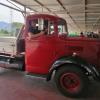Dear Experts,
According to API-14C we have to provide two independent protection layers for each identified risk.
Among the risks to be considered for a three phase separator : fire and blocked outlet.
Our Three phase separator safety system is designed as follow:
In case of high pressure the PSHH will cause the SDVs to close. If the inlet SDV stack open, we are in the case of a blocked outlet, the PSV is designed to handle this scenario with a relieving rate of 46000 kg/hr.
Regarding the fire scenario, whenever the fire is detected All SDVs are closed and the BDV will open.
So if the BDV stack closed we only have the PSV wich is designed for the blocked outlet case not fire.
Using Hysys simulation we can remark that the PSV is chattering during fire further more the fire scenario relieving rate is 3500 kg/hr.
Is this a safe situation !!
So, if we want to convert the PSV to provide protection for fire scenario we will lack a safety layer for the blocked outlet scenario?
We are proposing that the PSHH of the three phase separator will directly shut-off the well head. But I really think that the production department will not accept such modification due to its high impact on production.
What should we do?
Best Regards,
Khaled

 FB
FB














